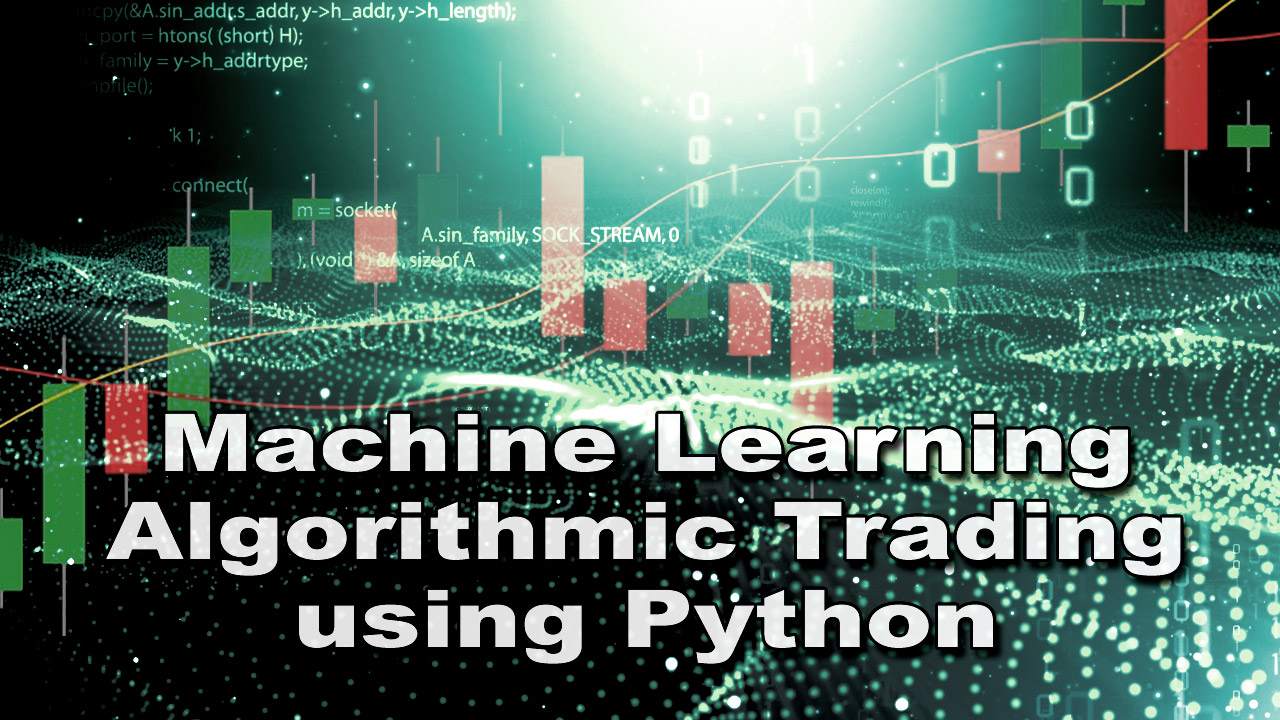Machine learning has become an increasingly popular technique in the field of financial analysis and trading. Algorithmic trading, which involves the use of automated trading systems to make decisions on behalf of traders, has become a popular application of machine learning in finance. In this paper, we will explore the various machine learning algorithms used in algorithmic trading and their implementation using the Python programming language. We will also explore the challenges associated with algorithmic trading and the future prospects of this field.
Introduction
Algorithmic trading is the use of automated trading systems to make decisions on behalf of traders. These systems use complex algorithms to analyze market data and make trading decisions based on that analysis. Machine learning has become an increasingly popular technique in the field of financial analysis and trading, with algorithmic trading being a popular application of machine learning in finance.
Machine learning algorithms can be used to analyze large amounts of financial data and identify patterns and trends that can be used to make trading decisions. These algorithms can be used to make predictions about future market movements, and they can be trained to adapt to changing market conditions.
Python is a popular programming language for implementing machine learning algorithms in finance due to its ease of use, flexibility, and the availability of numerous libraries and packages for machine learning.
In this paper, we will explore the various machine learning algorithms used in algorithmic trading and their implementation using Python. We will also explore the challenges associated with algorithmic trading and the future prospects of this field.
Machine Learning Algorithms for Algorithmic Trading
There are several machine learning algorithms that are commonly used in algorithmic trading. These include:
Support Vector Machines (SVM)
Support vector machines (SVM) are a type of supervised learning algorithm that can be used to classify data. SVMs are used in algorithmic trading to predict stock prices based on historical data. SVMs work by finding the hyperplane that maximally separates the data points into different classes. This hyperplane is then used to classify new data points.
Random Forests
Random forests are an ensemble learning method that combines multiple decision trees to create a more accurate prediction model. Random forests are commonly used in algorithmic trading to predict stock prices. Random forests work by creating multiple decision trees on randomly selected subsets of the data. The decision trees are then combined to create a more accurate prediction model.
Neural Networks
Neural networks are a type of machine learning algorithm that can be used for both supervised and unsupervised learning. Neural networks are commonly used in algorithmic trading to predict stock prices. Neural networks work by creating a network of interconnected nodes that are used to simulate the behavior of the human brain. These nodes are trained using historical data and can be used to make predictions about future market movements.
Long Short-Term Memory (LSTM)
Long Short-Term Memory (LSTM) is a type of recurrent neural network that is commonly used in algorithmic trading to predict stock prices. LSTM networks are designed to learn long-term dependencies in sequential data. This makes them well-suited for analyzing time-series data, such as stock prices. LSTM networks work by using a system of gates to control the flow of information through the network.
Implementation of Machine Learning Algorithms in Python
Python is a popular programming language for implementing machine learning algorithms in finance. There are several libraries and packages available for Python that make it easy to implement machine learning algorithms in algorithmic trading. Some of the most commonly used libraries and packages for machine learning in Python include:
Scikit-Learn
Scikit-learn is a popular Python library for machine learning. Scikit-learn provides a wide range of machine learning algorithms that can be used for classification, regression, and clustering. Scikit-learn also provides tools for data preprocessing, feature selection, and model evaluation.
TensorFlow
TensorFlow is an open-source machine learning library developed by Google. TensorFlow provides a wide range of tools and APIs for implementing machine learning algorithms. TensorFlow is particularly well-suited for implementing neural networks and deep learning algorithms.
Keras
Keras is a high-level neural networks API developed for Python. Keras is designed to be easy to use and provides a simple interface for implementing neural networks. Keras can be used with multiple backends, including TensorFlow and Theano.
Pandas
Pandas is a Python library for data manipulation and analysis. Pandas provides tools for data preprocessing, cleaning, and analysis. Pandas is particularly well-suited for analyzing time-series data, such as stock prices.
Challenges in Algorithmic Trading
Algorithmic trading has several challenges that must be addressed in order to be successful. Some of the most common challenges include:
Data Quality
The quality of the data used in algorithmic trading is critical to the success of the system. If the data is inaccurate or incomplete, the algorithm will make incorrect decisions. Therefore, it is essential to ensure that the data used in algorithmic trading is of high quality.
Overfitting
Overfitting occurs when a model is trained too well on the training data, resulting in poor performance on new, unseen data. Overfitting can be a significant problem in algorithmic trading, as the model may make incorrect predictions based on noise in the training data.
Market Volatility
The stock market is inherently volatile, and this volatility can be difficult to predict. Algorithmic trading systems must be able to adapt to changing market conditions in order to be successful.
Regulatory Compliance
Algorithmic trading is subject to a variety of regulations and compliance requirements. These requirements can be complex and time-consuming, and failure to comply with them can result in significant fines and penalties.
Future Prospects of Algorithmic Trading
Algorithmic trading is an area of finance that is rapidly evolving. As machine learning techniques continue to advance, we can expect to see increased use of algorithmic trading in the financial industry. However, there are also several challenges that must be addressed in order to ensure the success of algorithmic trading systems.
One promising area of research is the use of deep learning algorithms in algorithmic trading. Deep learning algorithms have shown promise in a variety of applications, and they may be well-suited for predicting stock prices and other financial indicators.
Another area of research is the use of reinforcement learning in algorithmic trading. Reinforcement learning is a type of machine learning that involves training an agent to make decisions based on feedback from the environment. This approach may be well-suited for algorithmic trading, as it allows the system to adapt to changing market conditions in real-time.
Conclusion
Algorithmic trading is a rapidly evolving area of finance that is increasingly reliant on machine learning techniques. Python is a popular programming language for implementing machine learning algorithms in algorithmic trading, and several libraries and packages are available for Python that make it easy to implement these algorithms.
There are several challenges associated with algorithmic trading, including data quality, overfitting, market volatility, and regulatory compliance. However, as machine learning techniques continue to advance, we can expect to see increased use of algorithmic trading in the financial industry.










